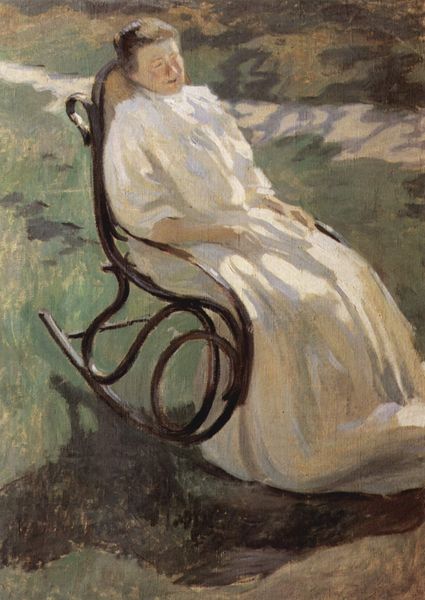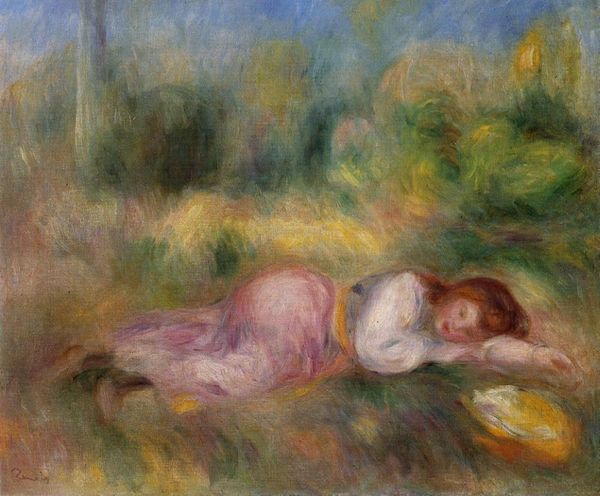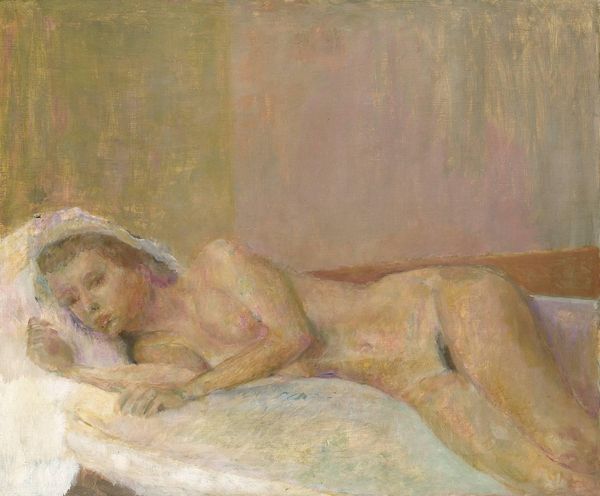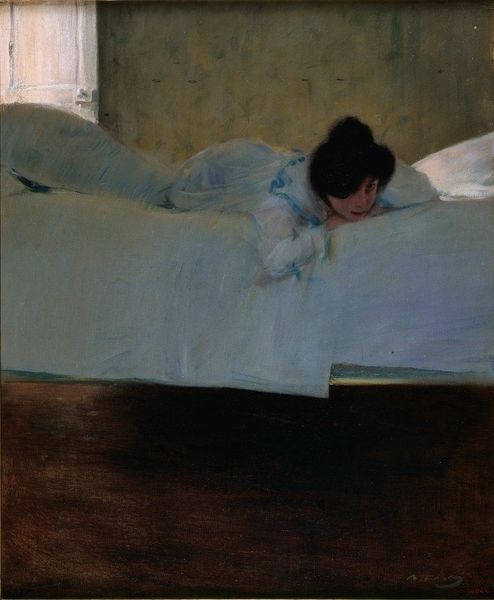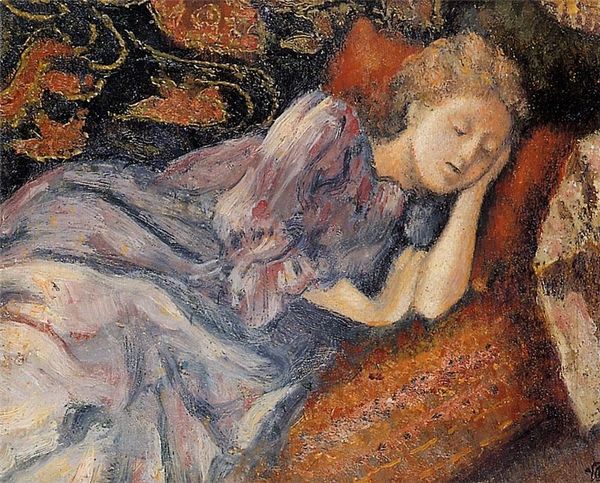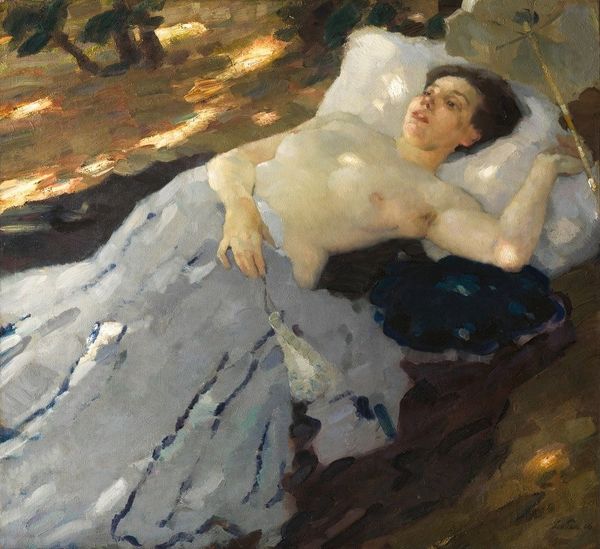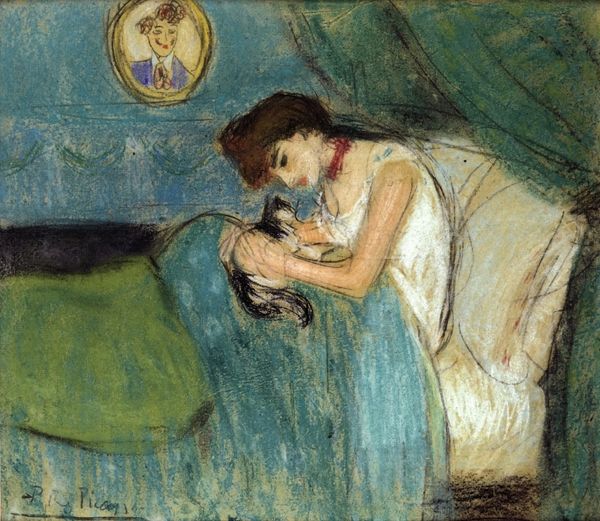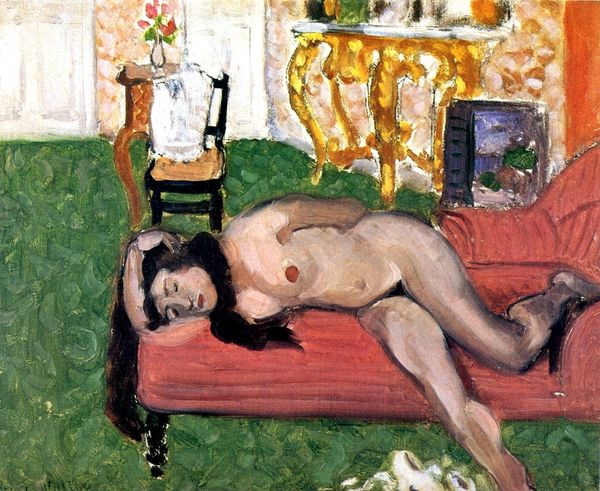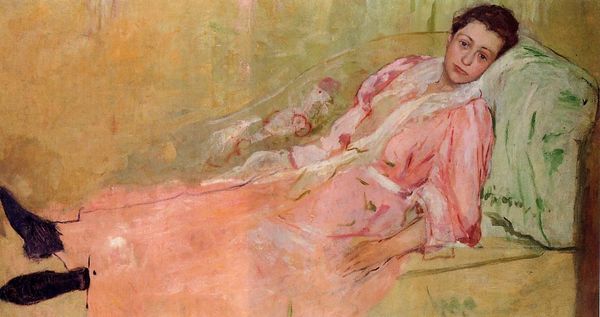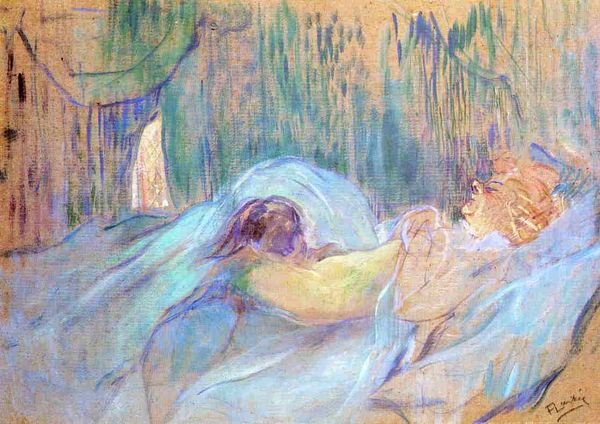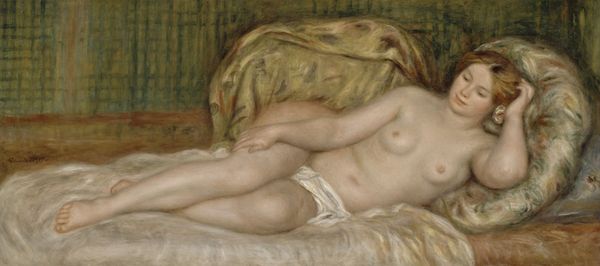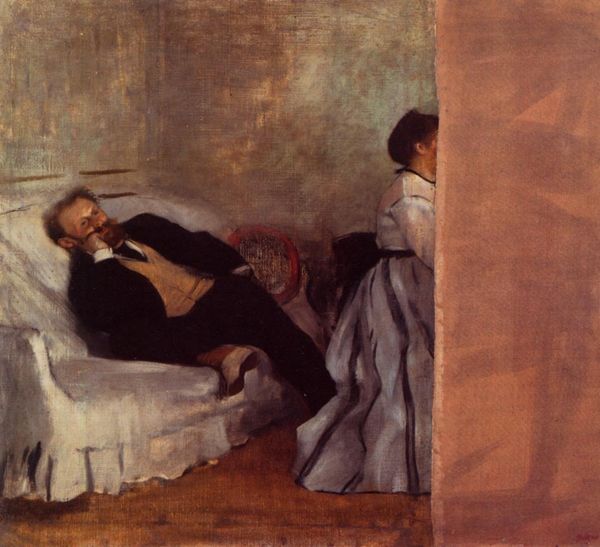
painting, oil-paint
#
portrait
#
painting
#
impressionism
#
oil-paint
#
landscape
#
charcoal drawing
#
figuration
#
oil painting
#
child
#
line
#
genre-painting
Copyright: Public domain
Curator: Looking at Gauguin's "Young Girl Dreaming," created around 1881 with oil paint, the interplay of materials here speaks volumes, doesn't it? Editor: It does. I immediately notice the juxtaposition. The top half has thick brushstrokes depicting the outdoor landscape, versus the lower half dedicated to a sleeping child. She seems so still, so at peace, and the overall texture feels quite raw and unfinished. What story does that choice of raw materiality tell? Curator: Precisely! Consider the context: Impressionism's break from academic polish. Gauguin wasn't just depicting a sleeping child; he was showcasing a particular mode of production, a new understanding of labor within artistic creation. The loose brushwork, the visible marks of the artist's hand – these were deliberate challenges to established notions of "fine art." What do you think the doll at the lower-right suggests? Editor: It’s striking; its vibrant color draws the eye and contrasts with the subdued tones of the rest of the piece. Perhaps a symbol of childhood innocence, and the contrast in visuality. Curator: Good, but dig deeper into production: Think of the pigments themselves, their origins. Gauguin’s application, while seemingly spontaneous, relied on industrial advances allowing mass production and wider consumption of vibrant colors. Does this clash with his depiction of a supposedly innocent domestic scene? Editor: That's fascinating. It introduces a tension – a subtle commentary on the encroachment of industrial materials into intimate, personal spaces. Curator: Exactly! By examining the very *stuff* of the painting, we move beyond simply admiring its aesthetic qualities and consider the broader forces shaping artistic expression and consumer culture. Even the canvas, machine-woven rather than hand-made, is part of this story. The landscape might symbolize childhood reverie and escape, but he delivers all of this by harnessing manufactured objects. Editor: It definitely changes my perspective to consider those material realities and mass produced objects in an artwork rather than only its pure, aesthetic presence. I never realized how integral those things were in shaping my experience. Curator: That's the core of it! It's not just about *what* is depicted but *how* it’s made, and the social conditions of that making, which reveals so much more about the artwork's meaning.
Comments
No comments
Be the first to comment and join the conversation on the ultimate creative platform.

